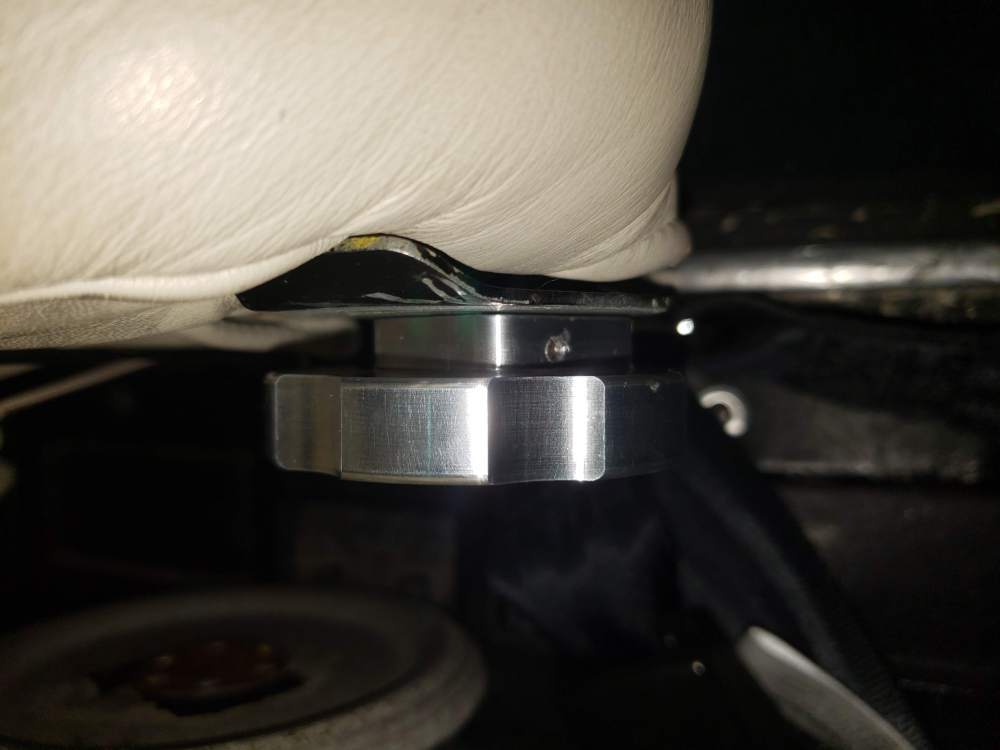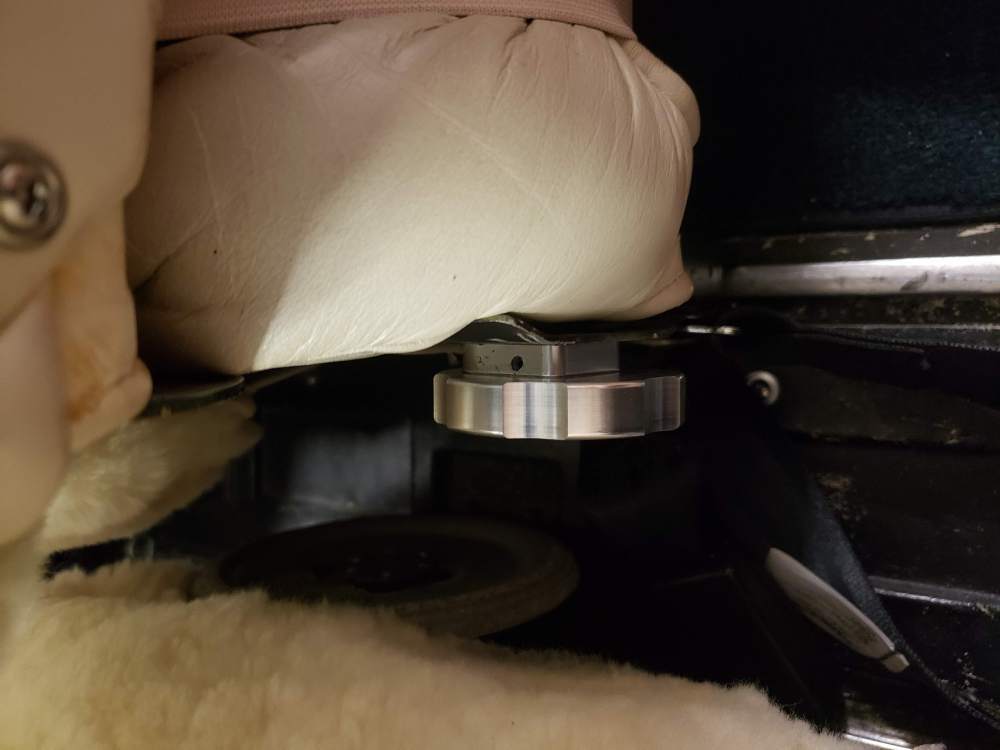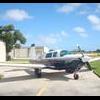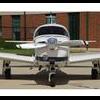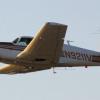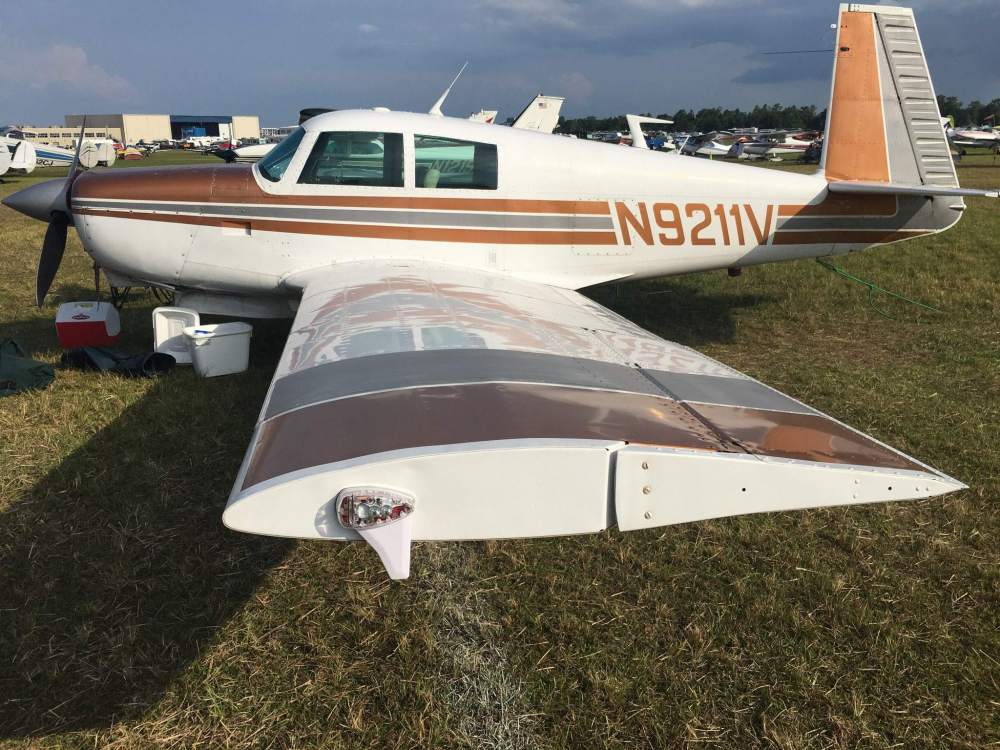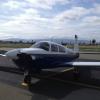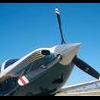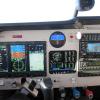Leaderboard
Popular Content
Showing content with the highest reputation on 04/09/2019 in all areas
-
"Hard IFR" like a few others have said really doesn't have a definition that any two or more pilots discussing it could possibly use the term with the same meaning or understanding. As shown above, everybody has their own interpretation. I hear this so often that I have given this some thought over the years. Their is certain irony in my opinion in that 90% of those that use this term are typically the pilots who don't fly it; at least not intentionally. This could be my limited sample space, but I am much more likely to hear the term used in the in the following way, "I don't fly hard IFR (anymore)." Since they don't fly it, they're not really defining it but stating they won't go up in anything that might push their comfort level which is a very large undefined broad spectrum. There is absolutely nothing wrong with that - unless they are limiting their training/proficiency work short by not preparing for anything more that what they consider easy IFR or what they might expect to find on any IFR flight that they would launch into. And that I feel is a training trap. From sitting right seat next to all kinds of pilots, I've seen that for some pilots that threshold might even be as little as a cloud in the sky, or a breezy day or even some fair weather but bumpy CU. So I've seen this mentality lead to some pilot that only intends to use their instrument rating to descend through a relatively thin layer, and consequently their IFR recurrency training is minimal to point of just maintaining legal IFR currency to keep their right to file in the system and get above or below a layer when they need too. I am not implying we have to train in what might be considered hard IFR conditions - not at all - but that we do have to train for anything (simulated). The problem with this mentality IMO is becomes apparent when the pilot wants to take a long x-ctry IFR trip. The pilot no longer has good control on limiting their exposure to easy IFR on a long trip. Their knowledge of weather and hazards may not even be up to the task of keeping them out of the conditions they don't intend to launch in after departing. On longer trips its isn't hard to see benign weather and become worse than forecasted and then find yourself needing to do an approach in challenging conditions for a pilot that may be little more than just legally current. So what makes it hard IFR in my opinion for all of us, is when we encounter the unexpected along the way which is much more likely on the longer x-ctry flight. It could be unexpected weather or it could be unexpected equipment failure. It could be the AP that all of sudden takes a dive when we engage in altitude mode and can no longer rely on for the approach. If we haven't been practicing diligently without the AP on approaches we're going to find it really"hard" to fly the unexpected IMC approach. If we're having a really bad day and we have an unexpected vacuum failure flying our legacy 6 pack without backup AI. We could be on the verge of becoming a statistic because we never intended to fly hard IFR, we didn't need that fancy stuff and certainly never practiced for it. But now we can find ourselves flying unexpected hard partial panel IFR without any recent partial panel instrument experience since we would never intentionally launch into such conditions with inop equipment. So for me, from sitting next to lots of pilots, the "hard" part of instrument flying isn't weather or even down to minimums providing this was no surprise; especially for proficient instrument pilots. Its the unexpected issues, whether it be an equipment malfunction or unexpected weather that the pilot wouldn't have launched knowingly into that is what makes it "hard". "Hard" in the context that it leads to us reading about the aftermath or preferably hearing about it in one of those "never again" stories. Those that push their instrument training i) to minimums (as actually required to log sim IFR proficiency flights) and ii) train for equipment failures and iii) build in panel redundancy for the unexpected failures since they know it can and will likely happen someday as well as iv) train to better interpret and avoid weather hazards make up the proficient pilot that will either complete their trips with minimum exposure to hard IFR condition (whatever they maybe) as well as survive the unexpected "hard" IFR issues that just happen. I know from reading above we have many such diligent pilots in this category that like to use their planes for long IFR x-ctry travel and correspondingly train for the worst as well as unexpected while never intending to knowingly launch in conditions they're not prepared for. And that's one reason why I admire Mooney pilot community. So in summary, down to minimums and IMC shouldn't be hard for those that train for it. IMO from my observations, "hard" = is the unexpected and unplanned for.5 points
-
I’ll translate it differently. If I didn’t own my planes for the 28 years I have owned her, I would have been able to retire 3 years ago. Instead, I get to hang out with you fine folks. Which has been priceless. [emoji16] Sent from my iPad using Tapatalk Pro4 points
-
4 points
-
172’s are just slow enough to piss you off, other than that, fun plane to fly4 points
-
4 points
-
3 points
-
Hope he's OK. He said some things I violently disagreed with, doesn't mean he's a bad guy. We just don't see eye to eye on some things. Always worrisome when someone drops off an aviation board.3 points
-
3 points
-
Thank you all for your comments especially from those who have trained in high wing aircraft and/or have come back to flying after an absence. Years ago in my teens I did limited training in 172s at Santa Monica airport in the 80s. Fun place to fly out of; we would practice maneuvers at altitude by the hills near Malibu. Unfortunately, I'm unable to train in the 172s as they are typically reserved for transition training for pilots moving up to the 172 after the PPL or if you and your instructor together exceed the gross weight of the 152 which the 2 of us don't. The club does not have any low wing aircraft as an option either except for a twin engine seminole which unfortunately does not get much use. The rest of the aircraft are exclusively Cessnas. I have considered the Piper Arrow but prefer the higher speed of the Mooney. And for those who have commented on the high wing visibility in the pattern, you know my frustration. Recently after I had finished up a lesson and was walking out of the club office, I heard a somewhat different sound and saw what I knew was a Mooney on the taxiway in front of the office. I stopped and found myself gawking; what a beautiful airplane and so different than anything else on the ramp at the club. The pilot I'm sure saw me taking a look and then stopped right in front of where I was standing. Good man! After what I had read so far and then seeing it in person; well I knew it was going to be the plane for me.3 points
-
Just keep in mind you absolutely would not be doing this to save money! Or time for that matter. Not gonna happen. The only reason to do it is because you love flying, your family is at least ok with it, and it’s really an excuse to take the trip while flying yourself. Also bearing in mind that your daughter will probably be at least 10 by the time you might have garnered a minimal amount of experience to unertake such a journey with acceptable skill and competence.3 points
-
You’re in the wrong place. This is a Mooney forum. They’ll use the 30 day trial on their next trip and then go back to eapis as soon as it starts costing money.3 points
-
It can make sense when you fill the seats with people and pets and visit places along the way.3 points
-
I did the very same thing and it was unquestionably the right decision. I'd buy a top of the line F before I'd spend the same money on a raggedy J. Of course if a top of the line J is in the budget, that is one of the best Mooney models ever made and a great investment.3 points
-
Like they say, if the weather's bad to IFR, but if it's really bad go VFR. I never noticed a difference between foggles and actual IMC. But that might have been testament to my instructor. One tip I've learned as I've worked towards having my personal minimums equal what's printed on the chart, is when on the autopilot, don't disconnect immediately on breaking out. Let the autopilot keep flying while you adjust from IMC to VMC. For example, breaking out right at minimums on the ILS at 200 ft. I'll let the autopilot take me down another 100 ft while I get a good look around. Then disconnect and land the plane. I've seen someone I was riding with, hit the autopilot disconnect immediately on breaking out of the clouds. But the action of pushing the red button, evidently included a slight tug on the yoke and back into the clouds we went. Now we're going missed. So go ahead and wait a couple of extra seconds after breaking out and get your bearings.3 points
-
I've been writing software for nearly 40 years now and every once in a while after my work has been placed into production I get a nagging feeling about a change that I've made and whether I accounted for everything. A few times it's come back to byte me in the ass, but I'm wondering if any of the people who wrote the MCAS software had the same feelings somewhere along the way. If they didn't I bet they do now.3 points
-
I’m in your boat also Erik. I’m just thinking there’s not much goin on, we need a reason to get those crabs3 points
-
3 points
-
I just heard from my avionics shop and Trek from Garmin - the FIKI limitation has been removed from the G5: https://www.garmin.com/en-US/aviationalerts/g5-electronic-flight-instrument-removal-of-fiki-limitation-and-preparation-of-g5-installation-for-g3x-installations-using-a-g5-as-a-standby-instrument/ That means the G5 can now be a backup for G500 TXi and G3X systems in FIKI planes and FIKI long bodies can now get the GFC500. Seeing as how I *just* overhauled the KI-256 (Bob Bramble was really great for that btw), my next task will be sorting out how this fits into my avionics plan.2 points
-
First, to make it clear, I don't log aircraft expenses in any one place but to compare my experience over 7 years to Marauder's summary on the back of an envelope: Hangar $3000 Fuel $3400 (75 hours @ 9 gph @ $5.04) Garmin $1000 Insurance $1100 Annual $500 Maintenance $500 Sub total - "operating cost" $9500 ~$125/hour. Engine depreciation $1125 (using Chris' number, same engine $30k/2000 hours) New avionics, paint, bladders, PFS, SabreCowl... $10,000 average annually and no sign of changing Mooney activities this year - PPP, Sun 'n Fun, MooneyMax, Caravan/AirVenture, Mooney Summit, AOPA fly in... $10,000 for registrations, motels, cars,...?2 points
-
humm...I roamed the grounds for a week at SNF and didnt run across this booth anywhere. Ill wait to for the avweb review, using the EAPIS system isnt too tough IMO. It is much harder for me to consider still yet another sub for something I dont really need. But who am I to say, this might revolutionize GA much like the green new deal will.2 points
-
And hydraulic flaps (not manual; manual flaps ended with the M20B). Which I don't like. They're more complicated than they need to be, O-rings are a point of failure, and it's more than a bit anachronistic to be pumping your flaps down IMHO. Also, lower Vfe speed. (On the electric F, Vfe is 125 mph, Vle is 120 mph, and I find I like that arrangement a lot better than 120 Vle / 100 Vfe in the older Fs.) Yokes and instrument panels can be updated relatively easily. Flap system, not so much. To the OP, the Js have a more robust electric landing gear system than the Fs, though many Fs have been converted to the 40:1 ratio system, which helps a lot. (The motor used in the electric gear Fs is on par with the motor Cessnas use for their flaps!) The fuel selector in the J is much more intelligently placed, post I think 1977. The later Fs (1969-end of the model) had the quadrant throttle, which I really don't like. (I flew a '67 M20F the other day and delighted in being able to simply and easily and accurately dial in the prop and mixture settings.) Push-pull for the win (the first year J had the quadrant, also, but then sanity was restored.) Not only is it harder to get the settings just where you want them with the quadrant power controls, they stick out in a pod that, coupled with the unfortunate placement of the fuel selector, makes changing tanks in flight a PITA. I'd have a J if I could have afforded one, TBH. Instead, I got a very nice (fresh P&I, fresh tanks, updated avionics, 1969-standard "T" panel layout, etc) M20F. And now I'm looking at maybe an Encore or an Ovation, with FIKI. But that's a whole 'nother story.2 points
-
Ahhhh, the good ol days trying to kill myself in the weather every night. [emoji848] Wouldn't trade the experience; don't really want to do it again. [emoji16] Sent from my Pixel 2 XL using Tapatalk2 points
-
2 points
-
Tom, Say what? OK I'll check that tomorrow. If it works It'll save me a lot of work. Thanks for the idea. I presume that is the way they hooked your Skybeacon up? Just the one tip light wire and toggle the strobe on the app? COOL idea. I don't do IFR at night where I might also need to turn them off in flight and I limit my night flying so I'm a basically a day VFR flyer now so the need to turn them off would only be very occasional on a late arrival while taxiing. Got to see how bright they are day time as to whether or not I'll toggle in the day time. RU waiting for the right side also like me? BTW check the paint job in my avitar. We look a lot alike :-)2 points
-
The strobe can be toggled on or off in the sky beacon app. The skybeacon wifi/app only works on the ground but this allows you to turn the strobe off while taxiing around other aircraft at night. I had the skybeacon installed at Sun N Fun. They were running a $100 installation at Sun N Fun. So far, all seems good.2 points
-
The AN-2 Colt is much heavier than a mooney (4-5 times heavier... ~12000lbs) I know, it doesn’t look it- but it is) and tends to fly very slow at a high AoA, and with low wing loading on its biplane type structure- hence it should (and does) have “big” wingtip vortices in relation to that small aircraft that was taking off behind it. A mooney, bonanza or single engine Cessna has nothing close to that size of a wake turbulence profile- even though the wingspans are similar. We just don’t create nearly as much lift, even at what we would consider a “high” angle of attack. as for the propwash (and Jetwash for that matter)- that tends to break up relatively quickly, due to the randomness of the wash itself. Don’t get me wrong- If you fly 3000’-6000’ through a turbojet wash- you’re going to feel it in a big way (probably “life altering” if you’re not ready for it). In relation to a propeller- the size (length) of a prop directly dictates how fast it can spin and still create thrust in an efficient manner. The tips can’t get going any faster than the upper transonic region- as once the prop gets supersonic, the compressibility of air at those speeds becomes a huge factor in prop efficiency. The ability for the prop to output enough thrust to make the power required to drive it worth the weight of the motor becomes increasingly out of balance. This is the main reason why you’ll never see a supersonic prop aircraft (although it may be theoretically possible given a light and powerful enough motor.. that I don’t know... I have never heard or seen one- but that certainly doesn’t mean an airplane like that wasn’t built at one point). supersonic props and the drag/weight associated with a prop led to jet engine design- where great lengths are taken to slow and compress a subsonic (or supersonic) air mass in the inlet->compressor sections... then light that air mass on fire and ride the explosion.... and if you’re really lucky- maybe throw 2-3lbs a second of raw fuel into the exhaust and use the excess bleed air and some igniters to light that on fire too. Then you can really get going quickly!2 points
-
2 points
-
I used Turo just for the first time this past weekend. I flew to Southbridge, MA for a wedding in Old Sturbridge. The enterprise closed at noon Saturday, and the local guy in town was not really responsive, so I went with Turo. Closest car was an Audi R8!! It was also my wife's dream car. So, I made a deal to take the guy for a flight and we lowered some of the costs. It was a blast to drive and she was giddy about it. I had a good experience and moving forward she wants us to use Turo to get a unique car when we take trips just the two of us. -Seth2 points
-
Remember this, the purchase pales to the cost of ownership over time. $30k per year for 10 years and who cares if you spent 50k or 100k to buy it? And that nice new GTN costs the same to install in K or a C model.2 points
-
I've really enjoyed my well-equipped C for.the last decade plus. It's good for 5 hours plus, also, but I really feel the need to stand up and walk around at 4 hours. Been 4:45 twice, landing with 1:15-1:20 in the tanks, restless legs and a stiff back. Maybe I just need to redo the seats?2 points
-
I seem to get my bearings a lot quicker coming out of IMC or from under the hood, takes me 10~15 minutes to settle in going into IMC, no A/P or wing leveler just hand flying2 points
-
Friends don't let friends buy Cessna's, especially 172's. With a $50K budget and less than... never mind... an M20C would be perfect for you. In all seriousness, I probably wouldn't spend $50K to get an E or F. But that budget will get you a really nice C. Of course I've never flown a 172, so maybe I don't know what I'm missing. My first airplane was an M20C and it was amazing. My wife and I flew it all over the country and loved every minute of it. Now we fly a K and it's even better.2 points
-
I wouldn't call that hard ifr, that's easy ifr, since I wouldn't be in it, I'd be on the ground also.2 points
-
I haven't worried too much about taking off behind a big jet because generally their takeoff roll is so much longer. Once airborne, I try to sidestep a bit to the upwind side of the runway. Asking for an early turn away from the climb path of the jet might help too. What scares me more are heavy-ish planes with short takeoff distances (e.g. a skydiving operations caravan) and now that Antonov in the video. Landing also scares me much more - even if you visually capture exactly where the plane touches down (not always easy) and land long beyond it, it's nearly impossible for me to visualize the flight path well enough to ensure staying above it.2 points
-
I just have to throw this out there as this service shares cars amongst strangers. Consider searching under the seats, footwells, and back-of-seat pockets for contraband left by previous parties. Typically when a rental car is returned, they check these things to avoid problems for their customers. The driver of the conveyance is responsible for the contents. I wish I could have taken a photo of the terrified grin on the faces of a elderly couple when I confronted them with a nice bag of weed I found in their rental. It was obviously extremely ancient and we didn’t initiate any charges considering all the circumstances but it doesn’t always end that way. Sent from my iPhone using Tapatalk2 points
-
A buddy of mine had an E with just one mod, the hunk of aluminum that goes inside the front cowl. He outran J's with ease. I wanted an E, I really did. but at my price point I could get a crappy E or a nice C. I went for the C. I doubt my trip time is more than 5 or ten minutes longer because of it. And if I ever have to replace cylinders I'll pay half as much.2 points
-
Yes, you can Mix #5 an #6. For the small Hartzell on the Mooney’s, you would be doing yourself a favor by lubricating with #5. It sticks to steel parts better an dose not break down. However it’s not a good idea on Propellers that are Certified into known Ice. In most cases that would be a long range high flying Turbo Prop. The way the Manuel reads is #6 must be used in a propeller that is capable of operating at -40C. If #5 is put in that propeller the dash has to be placarded for no flight colder than -39C So, If you don’t plan to operate colder than -39 your good to go. Personally an professionally speaking, #5 is a far more superior grease than #6. #6 is the “do-all” grease, you can put it in any propeller without worry. That’s why it comes in every propeller out of the factory. That was the way of thinking till the new formulation hit the Market an started separating. Now I put #5 in everything I can. For the Propellers that have to have #6, I have been fortunate enough to secure a large quantity of the older formulation of #6 that doesn’t separate an leak.2 points
-
Paul, Glad I didn't take that advice last year at Oshkosh, I wouldn't have been there and gotten my award. I shut down on black top and we hand pushed my Lancair to the parking spot (as did every other Lancair in the show area). I don't see any Rocket owners disagreeing with @FloridaMan . Hum, must be a reason. I had a prop strike on MY Rocket on blacktop. Talked with Darwin at Rocket Engineering after that incident and was given many tips to avoid it again, and I've shared that info many time on this forum to new Rocket owners. You've got over 100 pounds extra on the nose of the plane, with some of it extended out past the nose wheel. It's a wonderfully fast airplane, and some of the newer Mooney models, with more engine HP and speed, were developed as a result of Mooney losing sales to Rocket Engineering upgrading existing air frames. But taxiing this plane needs to be done very carefully. Asking to be parked where he did was not his idea, it was one given to him by other attendees. His second trip in he did with his "F" model. Sure doesn't seem to me he was being ignorant. And some of the comments being made by posters with no Rocket knowledge.....wow. Maybe it's time for this ex-Mooney guy to move on......... Tom2 points
-
Hard IFR has always meant to me “total IMC”, as in you don’t see a thing. Not necessarily to mins. But when in total IMC for a while that’s “hard ifr”. Not because it’s hard as in difficult but because it’s total. Sent from my iPhone using Tapatalk2 points
-
Don't tell me that! I still have a 12D in mine as NAV/COM 2. 480 is NAV/COM 1. I would be OK (safe and airworthy) if #2 goes, but, but even with a handheld backup - the holes in the swiss cheese are starting to line up.1 point
-
Regarding pushing out one type of grease with another... From a technical point of view... If the two materials are similar in chemistry and viscosity... there are things to keep in mind... 1) a higher viscosity material can push out a lower viscosity material...as expected... 2) a lower viscosity (watery) material will have difficulty pushing the thicker stuff, and will tend to burrow a channel through it... instead of pushing it out... 3) dissimilar chemistry will keep things from mixing, and aid in the channeling effect... 4) Similar chemistry and similar viscosity will do both... channel and push... by the time you have flushed all the old stuff out, you may have flushed the entire volume available in the country... 5) viscosity is often temperature dependent... that adds an additional challenge to the process... So... if the manual says disassemble and clean, and you are feeling lucky that day... don’t try the short cut... one viscous fluid is unexpected to be able to flush out the other... It doesn’t flow at all like water... PP thoughts only, not a mechanic or prop guy... shining a light on something that may not be there... Best regards, -a-1 point
-
SC, Now would be a good time to throw in a pic... Or MS will solve every screw challenge you are going to have for the next five years. My M20C didn’t take many screws out of the cowl, except access panels and that only happened annually... Make sure you have the right screws to match the threads that are there... stainless ones, because they hold water in the top... if there aren’t threads there... something happened to them... sheet metal screws... for this application... are probably not the right screw for the application... If you need to replace the threads... they are the riv-nuts... threads riveted in place... see your mechanic... quickest and lowest cost method.... Great question... just need some more detail... My M20C was stock 1965... PP thoughts only, not a mechanic... Best regards, -a-1 point
-
Where in the DelMar area are you? If 201er get you signed up for the New Jersey Mooney Yahoo group, you can always drop in one of the lunches if they are within driving distance or if someone is based near you, then can fly you out to the get together. Sent from my iPhone using Tapatalk Pro1 point
-
@Fred₂O you can change the settings in X-Plane to keep a solid layer to what ever altitude you want. I also think you can have go on the net and get the actual conditions1 point
-
You might even consider getting checked out in a Cessna 172 or a Piper Cherokee/Warrior, little bigger birds and HP, then move to the Mooney1 point
-
Some of the above dialogue is interesting at best...Hell no you weren’t wrong protecting your rocket..1 point
-
It is confirmed the account of a member seems to have been hacked and someone using IPs from all over (likely a VPN) was making the scam post. My logs on this end show many attempts to login to the account with wrong passwords resulting in the account being locked many times and finally the hacker used the password reset tool to change the password. This indicates that the hacker also has access to the victims email account.1 point
-
1 point
-
To me, hard IFR means being in the soup for continuous stretches and/or shooting approaches in IMC beyond the FAF. It is WAY WAY different in the clouds than under the foggles! The brain is very efficient at latching on to subtle visual references under the foggles to discern the correct spatial orientation in collaboration with the inner ear balance organs. In true absence of any visual reference in the clouds, signals from the balance system are radically misinterpreted by the brain. The two should never be equated.1 point





